I. H1 Tag
Importance of H1 Tag
The H1 tag is the primary heading of your webpage. It plays a crucial role in SEO as it helps search engines understand the topic of your content. Ensuring each page has a unique and descriptive H1 tag can significantly boost your rankings.
Best Practices for H1 Tag
- Use only one H1 tag per page.
- Make it descriptive and relevant to the page content.
- Include your primary keyword naturally.
- Keep it concise and engaging to attract user attention.
II. Alt Text
What is Alt Text?
Alt text (alternative text) is used within HTML code to describe the appearance and function of an image on a page. It helps search engines understand the content of images, which is crucial for image search optimisation.
Best Practices for Alt Text
- Describe the image in detail, but keep it concise.
- Include relevant keywords where appropriate.
- Avoid keyword stuffing.
- Ensure it accurately reflects the image content.
III. SEO Headline
Crafting an Effective SEO Headline
Your SEO headline is the first thing users see in search results, making it a critical factor in attracting clicks. A well-crafted headline can significantly increase your click-through rate (CTR).
Best Way to Write Headlines That Will Increase Traffic
- Keep it under 60 characters to avoid truncation.
- Include your primary keyword.
- Make it compelling and relevant.
- Use numbers or questions to intrigue readers.
- Ensure it aligns with the content on the page.
IV. Internal Links
What are Internal Links?
Internal links are hyperlinks that point to other pages on the same website. They help distribute page authority across your site and improve navigation for users and search engines.
Internal Links Guide
- Use descriptive anchor text.
- Link to relevant and high-authority pages.
- Ensure a natural flow within the content.
- Avoid over-linking, which can appear spammy.
Internal Linking Mistakes to Avoid
- Using generic anchor text like "click here".
- Linking to irrelevant pages.
- Overloading a page with too many internal links.
- Ignoring orphan pages (pages with no internal links pointing to them).
V. Meta Description
Crafting an Effective Meta Description
A meta description is a brief summary of a webpage that appears under the title in search engine results. It's not a direct ranking factor, but it influences CTR, which impacts rankings indirectly.
Best Practices for Meta Description
- Keep it between 150-160 characters.
- Include the primary keyword.
- Make it compelling and informative.
- Avoid duplicate meta descriptions across your site.
What Not to Do When Writing a Meta Description
- Don't exceed the character limit, as it will be truncated.
- Avoid keyword stuffing.
- Don't use generic or irrelevant descriptions.
- Ensure each page has a unique meta description.
VI. SEO Test Result: Will Adding Emojis to Meta Descriptions Help or Hurt Your SEO?
Adding emojis to meta descriptions can make your listing stand out, potentially increasing CTR. However, overuse or inappropriate use can look unprofessional. Test and monitor the results to determine their impact on your site.
Duplicate Meta Descriptions
Duplicate meta descriptions can confuse search engines and users, potentially harming your SEO. Ensure each page has a unique meta description that accurately reflects its content.
Adding Unicode Characters to the Meta Description
Unicode characters can make your meta descriptions visually appealing and can help your listing stand out in search results. However, use them sparingly and ensure they are relevant to the content.
VII. Anchor Text
What is Anchor Text and How Can I Optimise It?
Anchor text is the visible, clickable text in a hyperlink. Optimising anchor text helps search engines understand the context of the linked page.
Best Practices for Anchor Text
- Use descriptive and relevant text.
- Include keywords naturally.
- Avoid exact match keyword overuse.
- Ensure it provides value to the reader.





